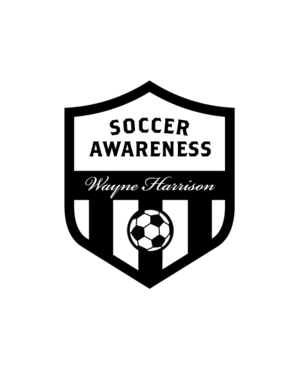Structuring a Training Session
/It would be useful if we all worked at structuring our sessions along the same lines to ensure we provide the correct coaching for all the players in all the teams. The following presentation is one way to set it up and it helps you organize your time management for a session. This is how we want to do our winter training sessions for everyone. We have one hour per session you can change the amount of time spent on each phase depending on how long your session is.
1) WARM UP: (10 Minutes) - Ball each and / or Awareness workout. They must get lots of touches to get comfortable on the ball to begin the session.
2) THEME OF THE DAY (35 min.)
3) SCRIMMAGE: (30 min.) - To practice when, where, and how to apply the theme. They must be S.S.G’s and preferably 3 v 3 game size.
4) COORDINATION AND SPEED WORK: (10 min.) - Balance / quick feet. Also power work for the older ages.
5) COOL DOWN: (5 min.) - Ball each and / or Awareness workout if time allows.
6) CONCLUDING DISCUSSION: What did they learn today?
TOTAL = ONE HOUR AND 30 MINUTES
By using a structure you can focus the minds of yourself and the players thereby increasing the work time and decreasing the talk time. Players arrive for training and know what to expect and can get straight into the warm up without prompting.
More Demonstration and less Explanation works best. If you have time use the session planner to have a record of what you did; how it fared and what you may change for next time to make it better. Build up your own record of what you did over a season and from this you can plan a program for yourself in time.
How to Organize a Training Session
1) Organize The Equipment (Bibs, Balls And Cones)
2) Coach Only One Team At A Time To Avoid Confusion
3) Coach (Affect The Attitude) Of Each Individual Player In That Team
4) Stick To The Same Theme
5) Use Designated Start Positions To Begin Each Practice To Paint The Picture You Want To Create
6) List The Key Coaching Points
7) Think Individual / Unit / Team – Simple To Complex And Develop Logical Progressions Into The Session
8) Specify The Size Of Area Used And Make It Relevant To The Numbers And Ability Of Players Used
9) Divide The Field Into Thirds For Easier Points Of Reference In Small - Sided Games
10) Use Target Goals, Target Players, Or Lines For Opponents To Play To In Phase Plays And Functions
11) Isolate The Areas And Players In Functional Practices To Keep It Specific
12) Use Offside Where Necessary For Realism
13) Coaching Method: Freeze The Coaching Moment (Stop, Stand Still), Review What Went Wrong, Re-Run Slowly (Can Be Walking Pace), Re-Create The Set Up And Go At Match Speed. Let Them Play
14) Use A Questioning / Guiding Coaching Method Rather Than Command
15) For Attacking Themes Limit The Number Of Touches The Opponents Have If They Win The Ball
16) For Defending Themes Limit The Number Of Touches The Defending Team You Are Coaching Has When They Win The Ball. This Ensures The Opponents Have The Ball For The Defenders To Try To Win Back











Complete 6 to 10 Year Old Developmental Coaching and Training Program
More than 750 pages of session, drills, theory and more to get you started or take your team to the next level.
This program is perfect for youth coaches wanting practices to start their soccer coaching education and it is also for those more advanced and experienced coaches wanting to train their players as best they can at these wonderful open minded ages for development and education of both the mind and body. Our plan is to help all coaches at whatever level of experience they are at.
This book aims to provide the best educational information possible for all coaches of players from 6 to 10 years old in terms of the Technical, Tactical, Skill, Psychological and Physical attributes players need at these ages and then bring it all together in a team concept. As the age group raises so does the type of training required.
Limited Time: Get a free copy of Best of Soccer Awareness ($12.95 value) with your purchase